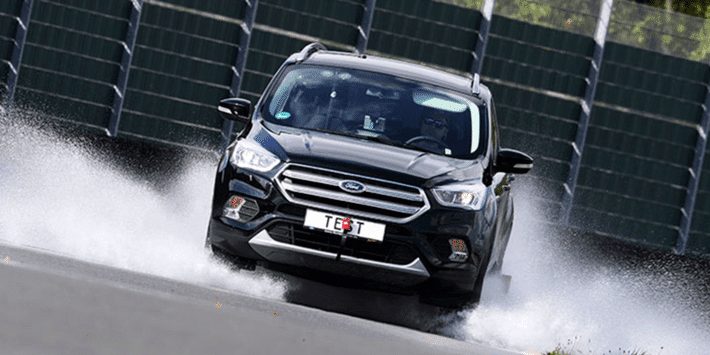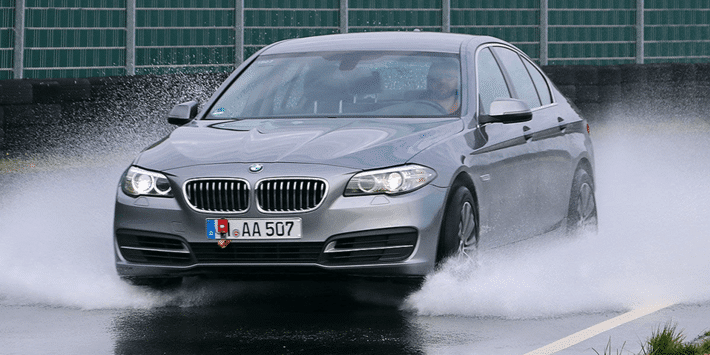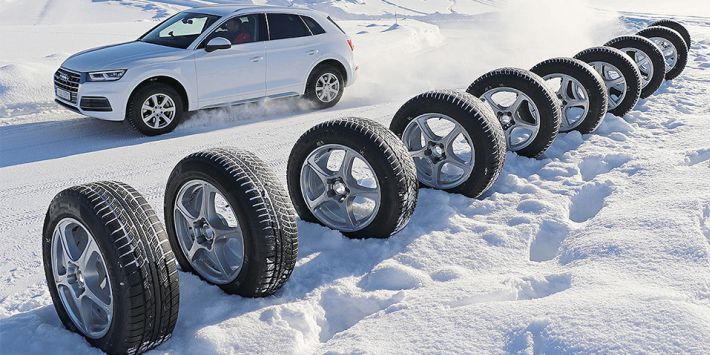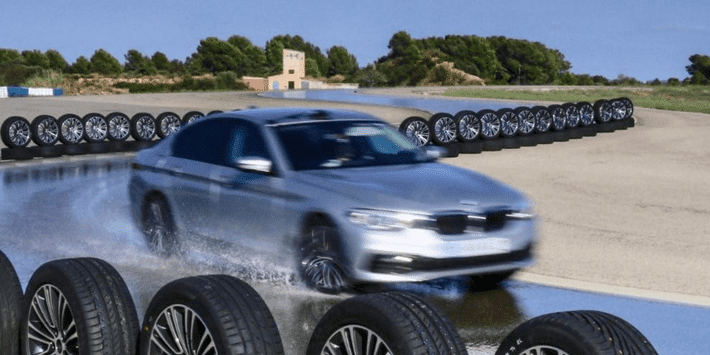For its latest tyre test, the Touring Club Suisse compared 9 all season tyres for 14-inch rims. The conclusion? Even if their performance doesn't measure up to that of specialised summer or winter tyres, all season tyres can provide a good compromise for some motorists.
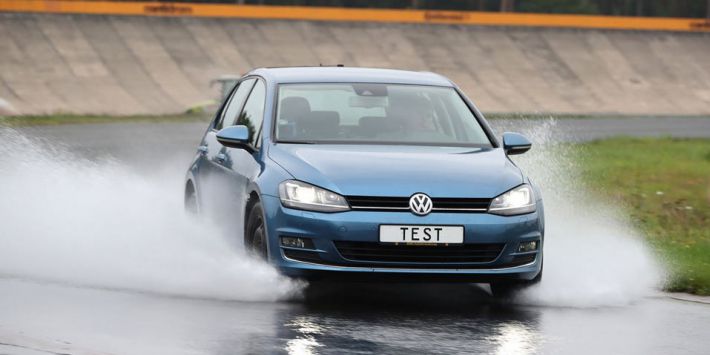
The test
For this year’s test, the Touring Club Suisse (TCS) teamed up with the General German Automobile Club (ADAC). The following 9 all season tyres were tested in size 175/65 R14, a popular size for passenger cars:
- Continental AllSeasonContact
- Firestone Multiseason
- Goodyear Vector 4Seasons Gen-2
- Hankook Kinergy 4S H740
- Maxxis AllSeason AP2
- Michelin Crossclimate (first generation)
- Nexen N’Blue 4 Season
- Nokian Weatherproof
- Vredestein Quatrac 5
These tyres were tested on multiple surfaces, each accounting for a different percentage of the final score: dry (15%), wet (30%), snow (20%), ice (10%). Marks for noise (5%), rolling resistance (10%) and wear (10%) made up the remainder of the score.
5 tyres “conditionally recommended”
While in most TCS / ADAC tests some tyres are awarded the “highly recommended” rating, the same cannot be said for the all season tyre test. There was some improvement on the last version of this test conducted in 2016, with none of the tyres obtaining the “not recommended” rating, however 5 of the tyres were described as only “conditionally recommended ”.
Starting with the Michelin CrossClimate whose new “+” version was not available in the size tested, and which, according to TCS, shows too many weaknesses on snow. Its performance in wet and dry conditions was not enough to offset these weaknesses. However, this tyre was the best for wear and performed well on ice.
The Hankook Kinergy 4S H740 was good in terms of wear and fared reasonably well on ice. But its dry, wet and snow performance meant that it failed to stand out from the crowd.
The same faults were found with the Maxxis AllSeason AP2 which was slightly better in snow and wet conditions, but not as good on dry road surfaces.
The Vredestein Quatrac 5 obtained the best results in dry conditions. Very good in terms of wear and rolling resistance, it also performed well on ice. The only drawback was its performance on wet roads and in snow.
With the lowest scores in wet and dry conditions, the Firestone Multiseason made up ground with its snow performance. Although good in terms of wear and rolling resistance, it was the noisiest tyre in the test.
4 tyres “recommended” as acceptable compromise
The Touring Club Suisse says that it is better to fit summer tyres in summer and winter tyres in winter. But, it considers that an all season tyre achieving the “recommended” rating offers a good compromise and is suitable for motorists driving less than 25 000 kilometres per year.
The Nokian Weatherproof showed a few weaknesses in dry conditions but obtained the best score of the test in snow tests. It was also very good in wet conditions, on ice and performed well in wear and rolling resistance tests.
The Goodyear Vector 4Seasons Gen-2 was the best tyre in wet conditions and achieved the best score for noise. Performing well in rolling resistance and wear tests, the tyre displayed a few weaknesses in dry and snowy conditions.
Newcomer to the all season market, the Continental AllSeasonContact was said to offer notably balanced performance. It excelled on ice and wet surfaces and in snow. Despite a few weaknesses on dry surfaces, testers were generally satisfied, particularly with its rolling resistance score.
TCS and ADAC declared the Nexen N’Blue 4Season to be the best all season tyre in the size tested. Despite being slightly weaker in snow and dry conditions, it obtained the best score on ice and was convincing in wet conditions.
| Tyres | Ranking |
| Nexen N’Blue 4Season | 1 |
| Continental AllSeasonContact | 2 |
| Goodyear Vector 4Seasons Gen-2 | 3 |
| Nokian Weatherproof | 4 |
| Firestone Multiseason | 5 |
| Maxxis AllSeason AP2 | 5 |
| Vredestein Quatrac 5 | 5 |
| Hankook Kinergy 4S H740 | 8 |
| Michelin CrossClimate | 8 |

